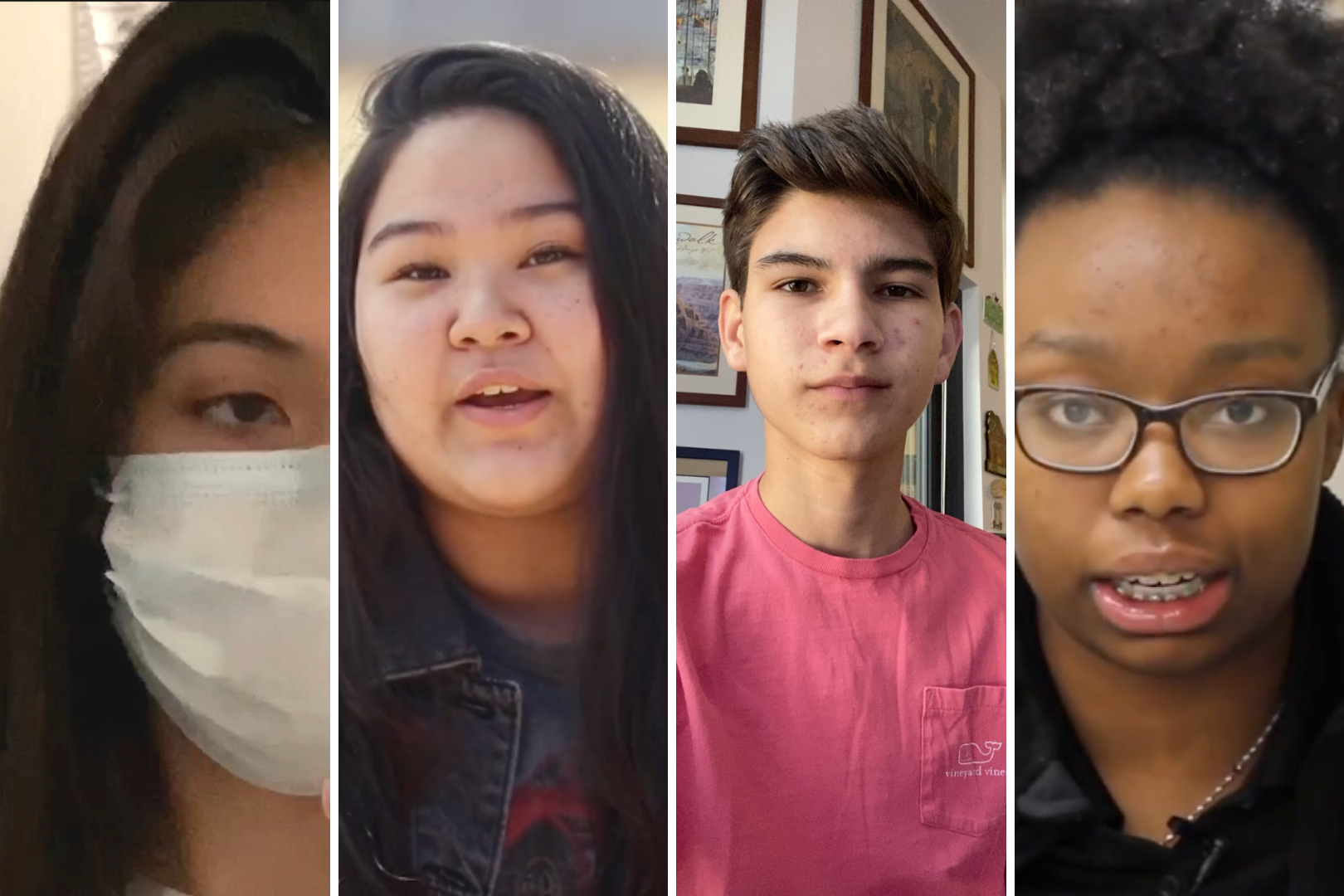Students adapt to a new way of life as the war on coronavirus shuts down America

Over 90 percent of public and private secondary schools in America are closed as the government tries to prevent the further spread of the novel coronavirus.
The massive disruption is forcing millions of students to adjust to new routines at home, unexpected hardships, the realities of distance learning and canceled rites of passage such as graduation and prom. For some, the main feeling is boredom or isolation. Other teenagers are growing closer to their families. And some students acutely feel the dangers of infection in their daily lives, injecting fear into teenage lives previously focused on classwork, sports, video games or dating.
As part of a new curriculum, “Making Sense of Coronavirus through storytelling and media making”, PBS NewsHour Student Reporting Labs (SRL) asked its national network of middle and high school students to share stories from their daily lives in isolation.
Students at risk
16-year-old Katelynn Gonzalez, a tenth grader at Canyon High School in Santa Clarita, California became sick in early March. “After numerous visits to the pediatrician and the ER, I found out that I had bronchitis and pneumonia,” said Gonzalez.
“Getting the medications from CVS was really hard because people were trying to stock up on medication.” She said test shortages prevented her from getting tested for COVID-19, but she still followed self-isolation recommendations.
“I am worried for my parents and my grandparents because my parents work at a hospital.”
Tenth grader Harrison Dunbar at Christopher Columbus High School in Miami Florida says he is most concerned about his family’s health. “I am worried for my parents and my grandparents because my parents work at a hospital,” said Dunbar. “They see sick people every single day and just to take precautions, I’m not going near them as much, I’m not hugging them as much.”
“I have to be more aware of my surroundings because I have Crohns and that means I have a weak immune system.”
While older patients tend to face the greatest risks from COVID-19, CDC guidelines state people with underlying medical conditions are in danger regardless of age. That worries students like James Battis of Hallie Wells Middle School in Clarksburg, Maryland.
“I have to be more aware of my surroundings because I have Crohns and that means I have a weak immune system,” said Battis.
“Everything has been taken away from me”
“I’m very upset,” said twelfth-grader Salma Valenzuela, who attends Northside Charter High School in Brooklyn, New York. “The coronavirus really affected me because it took away my senior year…everything has been taken away from me. I can’t see my friends anymore. This is like my last high school experience and I’m not enjoying it.”
“Just from seeing other teens on social media and how their lives are being affected, it makes me feel like mine is going to take a huge hit like theirs.”
For students who regularly travel to see family, stay-at-home orders and quarantines have separated them from loved ones., “I have a parent who lives in a different state and I don’t know if I’m going to be able to visit them at the time that I expect to,” said 16-year-old Haley Mattes from Catawba High School in Fort Mill, South Carolina.
“Just from seeing other teens on social media and how their lives are being affected, it makes me feel like mine is going to take a huge hit like theirs,” said Haley. “Even when I knew the coronavirus was a thing, I never thought it was going to be this deep.”
Eat, Do Homework, Repeat
Millions of American students have been haphazardly yanked from their schools with school resuming digitally with recorded video lectures, class discussions over Zoom and quizzes, tests and papers administered online. “Everyone is required to go into remote learning mode,” said 16-year-old Benjamin Cure, a tenth grader at Christopher Columbus High School. “I have this little desk set up in front of my TV. It has my homework, my folders, and I do that while watching the TV to keep myself updated on the news for the day.”
Rules and expectations for distance learning vary from state to state, district to district. Some states are not counting online lessons as time in the classroom, and for states that do, teachers are rushing to make the switch and provide ongoing learning opportunities for their students.
“During this whole time, my teachers have been very flexible, especially with the amount of work they give,” said Isabelle Mesropian, who attends Canyon High School in Santa Clarita, California. She added, “Honestly, I miss the classroom atmosphere. It’s sometimes hard to stay motivated at home when you have all of these other distractions around you.”
“It definitely isn’t the same as being in a classroom and being with your classmates and hearing your teachers crack jokes about history,” says Bridgette Adu-Wadier of T.C. Williams High School. The constant disruptions from younger siblings playing in her family’s home while she works can make concentration a challenge, she says.
“I don’t know what I’m supposed to do.”
Meanwhile, some students with jobs face difficult dilemmas regarding personal safety during the pandemic. In the afternoons after school, John Barnes of HB Woodlawn Secondary Program in Arlington, VA works at a bakery. Deemed an essential business, his employer has remained open during the shutdown. He says that the counter where he works does not provide six feet of distance between him and the customers. “I don’t know what I’m supposed to do. I just have to hope that everyone’s not sick who comes in. I don’t know if I should be working because my family’s anxious.”
Visit NewsHour’s Instagram to see an edited version of students’ stories.
EDITOR’S NOTE: The interviews in this piece were collected by students using a new curriculum from PBS NewsHour Student Reporting Labs: “Making Sense of Coronavirus through storytelling and media making.” The unit is broken up into different pathways that lead learners through the steps necessary to explore the coronavirus’ impact on people, families, and communities.






